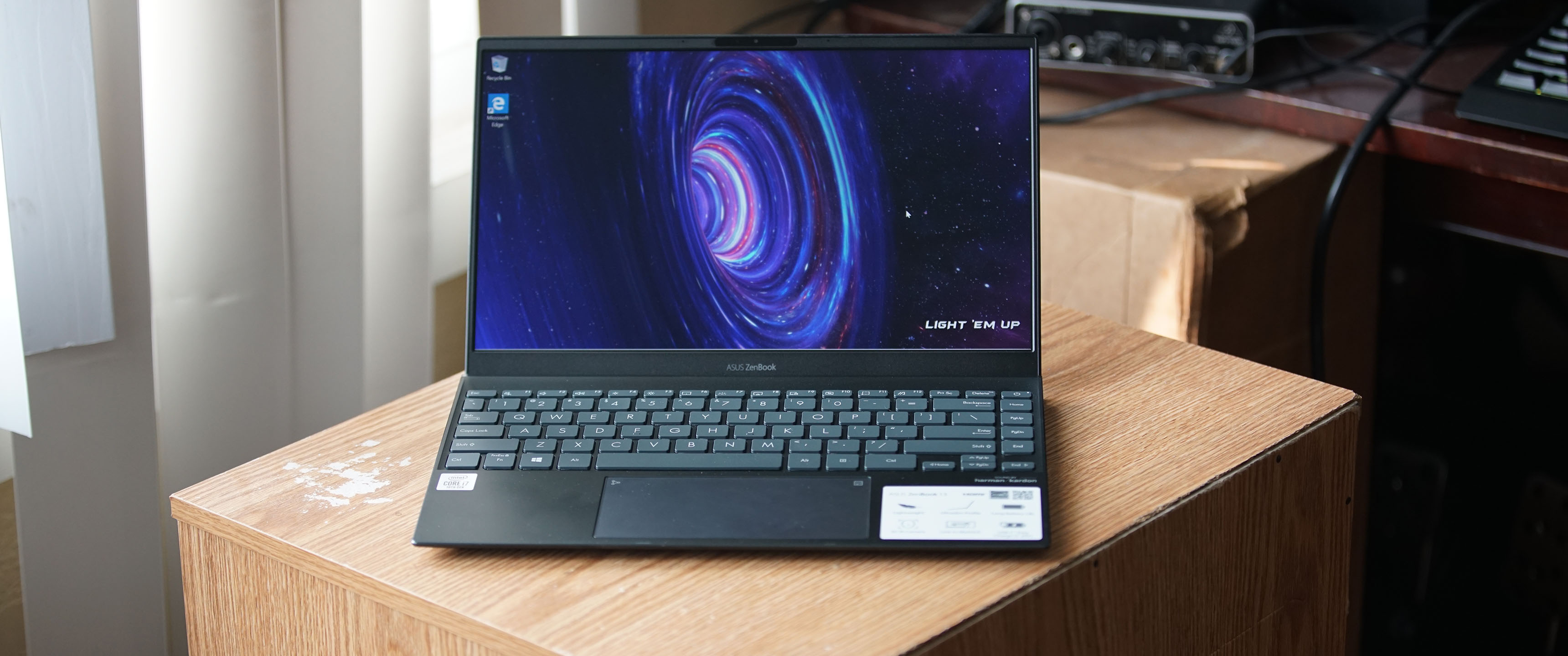TechRadar Verdict
Weighing under three pounds, the ASUS ZenBook stands out with great portability, MIL-STD-810G grade durability and some exceptional battery life. However, it's better suited for basic tasks due to a lack of power, storage and awkward keyboard placement.
Pros
- +
Blends sleek and ultra slim design with MIL-STD-810G durability
- +
Outstanding external speakers
- +
Great battery
- +
3D IR Camera unlock works well majority of the time
Cons
- -
Underpowered
- -
Wired headphone usage requires included dongle
- -
Keyboard layout leaves much to be desired
Why you can trust TechRadar
The Asus ZenBook line of Ultrabooks have evolved into a variety of form factors, from the dual screen Pro Duo to Pro 15 variants. That hasn’t stopped Asus from constantly improving upon the mainline series in subtle yet significant ways. With the ZenBook 13 UX325, longtime users should already know everything to expect. Anyone else looking for an affordable Ultrabook with a sleek design, serious durability, admirable battery and a decent feature set should walk away fairly satisfied.
Under the hood, the ZenBook 13 UX325 features a modest spec sheet. The four-core Intel i5 pushes out 3.6 GHz alongside its Intel UHD integrated graphics. Offering 8GB of RAM and 236GB of SSD space, means that everyday activities like web browsing or media consumption works without a hitch on the clear 13-inch FHD screen.
The ZenBook 13 UX325 stays quiet as a mouse and doesn’t overheat under immense pressure. Alongside its portability, opening the ErgoLift design tilts the keyboard automatically which helps comfort but hurts screen positioning. The design form also hurts the keyboard set-up that feels fairly awkward in the spacing. Big hands beware.
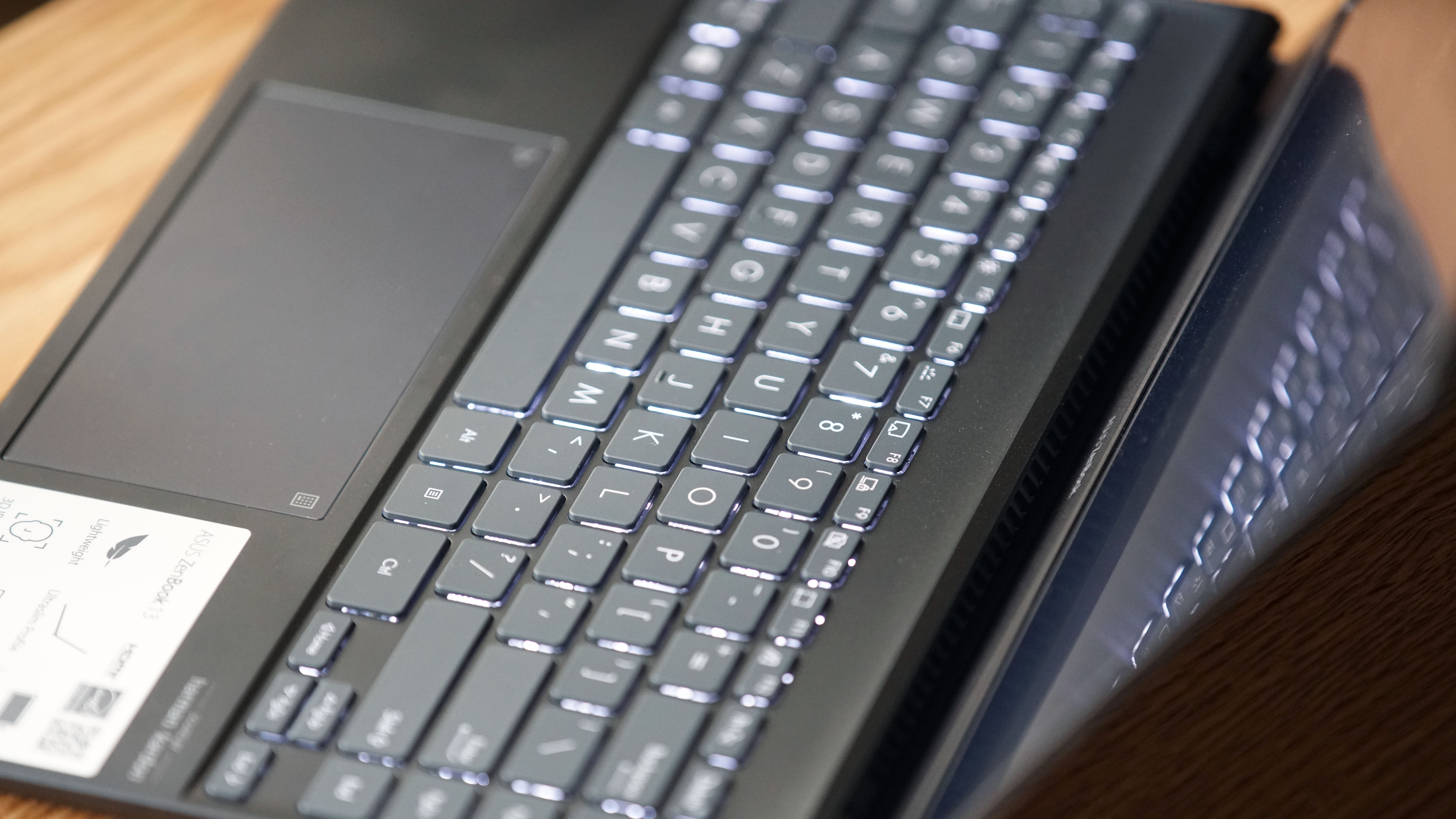
Here is the Asus ZenBook 13 UX325 configuration sent to TechRadar for review:
CPU: Intel i5-1035G1 (4 Cores, up to 3.6GHz)
Graphics: Intel UHD Graphics
RAM: 8GB 3200MHz LPDDR4x
Screen: 13.3” LED-backlit FHD (1920x1080) FHD
Storage: 256GB SSD
Ports: 2 x Thunderbolt 3 USB-C, 1 x USB 3.2 Gen 1 Type-A, 1 x HDMI 2.0, 1 x MicroSD Reader
Connectivity: Wi-Fi 6 + Bluetooth 5.0
Camera: 720 HD infrared (IR) webcam
Weight: 2.36lb (1.07kg)
Size: 11.97 x 7.99 x 0.55 inches (30.42 x 20.3 x 1.39 cm; W x H x D)
Video conferencing from the ZenBook 13 UX325 works thanks to the serviceable 720p infrared webcam that can somewhat handle limited lighting. Since the ultra-book lacks a fingerprint scanner, the webcam doubles as a 3D face detector. Unlocking is fairly effortless, takes seconds and recognizes faces as accurately as the similar camera Apple uses on recent iPhone 11. Again, positioning the webcam doesn’t work well with the ErgoLift either.
Asus’ NumberPad tech makes a return featuring an LED illuminated numeric keypad integrated into the touchpad. Activating the keypad is as simple as hitting the icon located on the top right while swiping the opposite side opens the Windows calculator. Transitioning between cursor with the keypad isn’t difficult at all despite a small learning curve. This makes the ZenBook 13 UX325 perfect for people who are more concerned with prolonged Spreadsheet or Excel sessions than word processing.
Don’t expect much when it comes to performance, though. AAA PC games, heavy photo editing and video editing are pretty much off limits on the ZenBook 13. Slowdown is possible when too many Google Chrome tabs are open or attempting to watch videos higher than HD quality. Those looking for better performance might want to look beyond its $799 (£684.29, AU1127.35) price point.
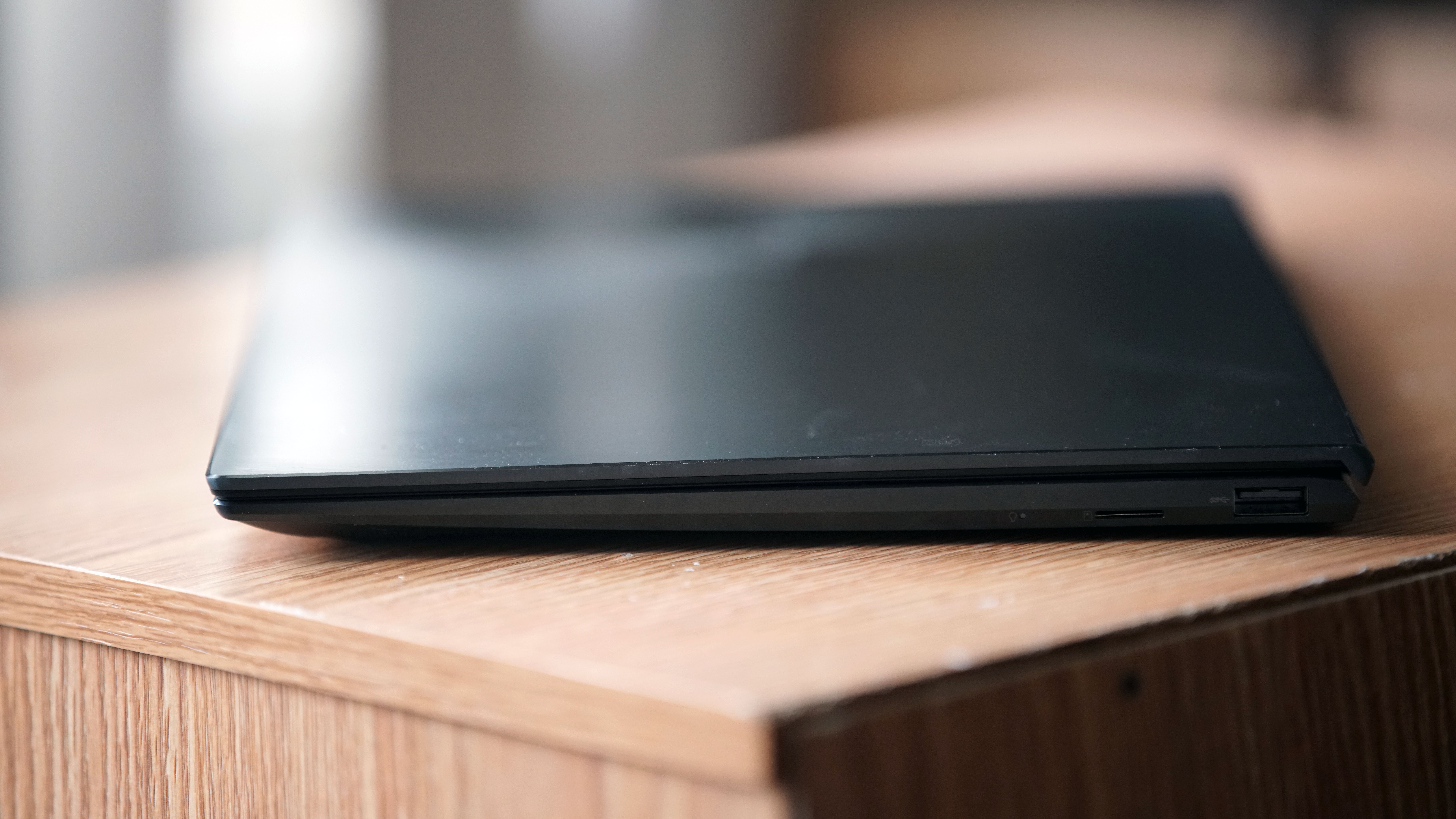
The ZenBook 13’s battery deserves special recognition. Though ASUS promises between 16 to 22 hours of battery life, the test unit on lower battery settings ran between 14 to 17 hours of daily use. During its PCMark 10 Battery Life test, it did a respectable 9 hours and 40 minutes. This means that it can last a full day between charges that don’t take very long. The battery usually takes a little over an hour to fully charge. Using the standard TechRadar movie test of looping local 1080p video, the ZenBook 13 delivered 11 hours and 56 minutes. That’s enough battery power for a flight from LAX to Heathrow with juice to spare.
Sign up for breaking news, reviews, opinion, top tech deals, and more.
Two Thunderbolt 3 USB-C ports on the left side also serve as charging ports for the ZenBook 13 UX325. Unfortunately, this means there isn’t much choice on what side to plug for those particular about positioning. They sit right next to a standard HDMI 2.0 port for those looking to show a presentation or watch a movie file on a bigger screen. The right side features one standard USB 3.2 port and MicroSD Reader. A USB C to USB 3.2 adapter is also included.
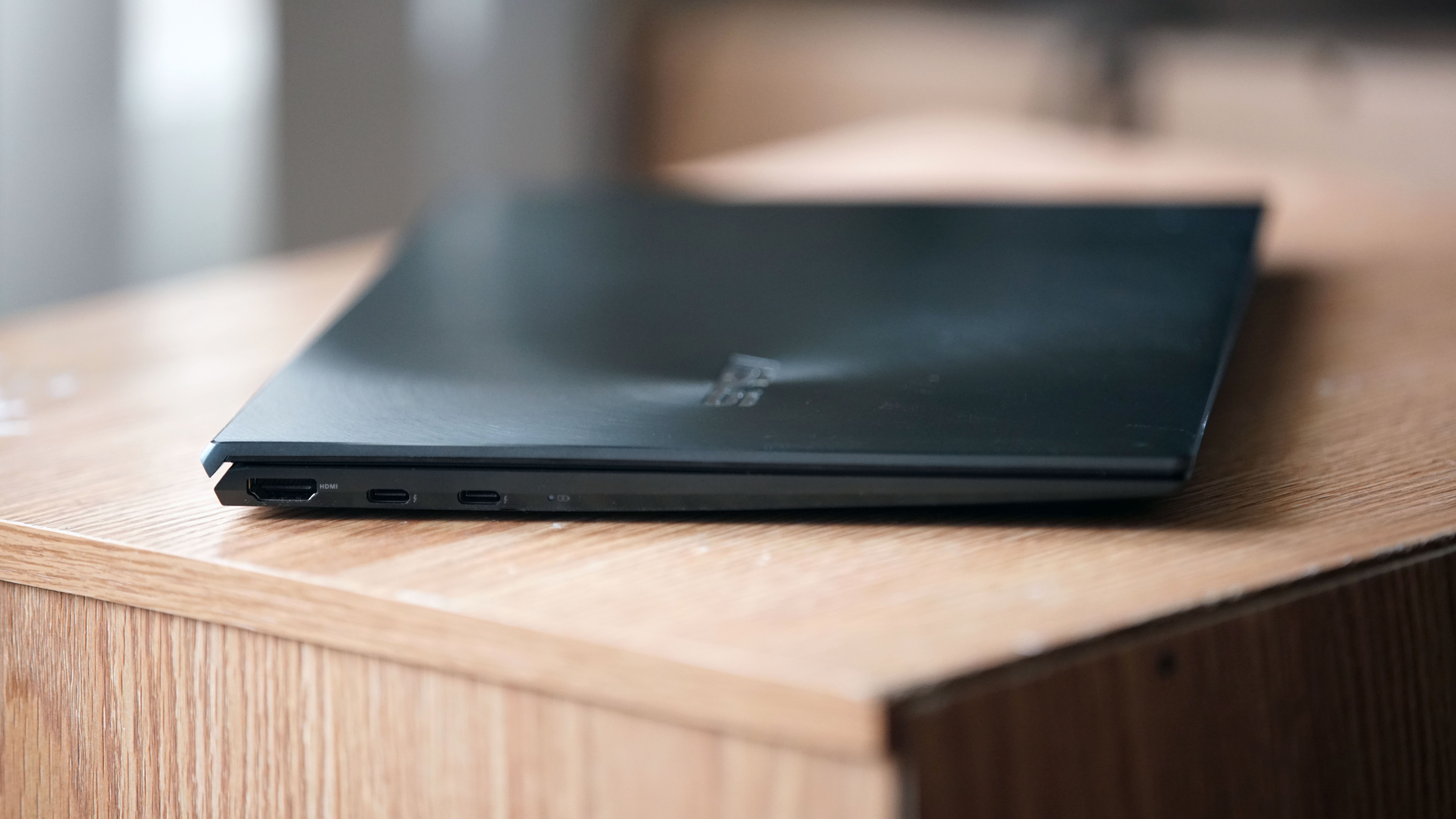
Here’s how the Asus ZenBook 13 UX325 performed in our suite of benchmark tests:
Cinebench R20 CPU: 1,139
3DMark Time Spy: 525; Fire Strike: 1,535; Night Raid: 6,201
GeekBench 5: 1,160 (single-core); 4,051 (multi-core)
PCMark 10 (Home Test): 3,708 points
PCMark 10 Battery Life: 9 hours and 40 minutes
Battery Life (TechRadar movie test): 11 hours and 56 minutes
Due to the lack of a headphone jack, Asus does include a USB C to 3.5mm headset adapter which could be a problem. Twin Harman Kardon certified speakers are a noteworthy alternative to using headphones. Films, music and voice sound rich, clear and give outstanding bass when needed.
Asus refines the latest in its ZenBook ultrabook line with a lighter yet durable frame design, long lasting battery and more for an affordable price tag. For general use, the ZenBook 13 works wonders for low level tasks. Long typing sessions may feel uncomfortable due to the awkward keyboard spacing and ErgoLift design. Anything beyond that may require something a bit more powerful. Performance aside, not having a headphone jack could be a sign of things to come. Right now, it feels sacrilegious. Still, the Asus ZenBook 13 may be best for anyone in need of an inexpensive Windows laptop that can take a punishment.
Buy it if...
You need an inexpensive ultra-portable for basic tasks
For under $800, the ZenBook 13 UX325 should be on anyone’s radar who wants an ultrabook that can handle reasonable web browsing and media consumption.
You require something extremely durable
For something that weighs under three pounds, hitting the MIL-STD-810G standard means a lot in the durability department.
You need some significant battery power
The 67 Wh lithium-polymer battery offers nearly a full day of battery life between charges. Meanwhile, quick charging from empty to 40% provinces is fantastic.
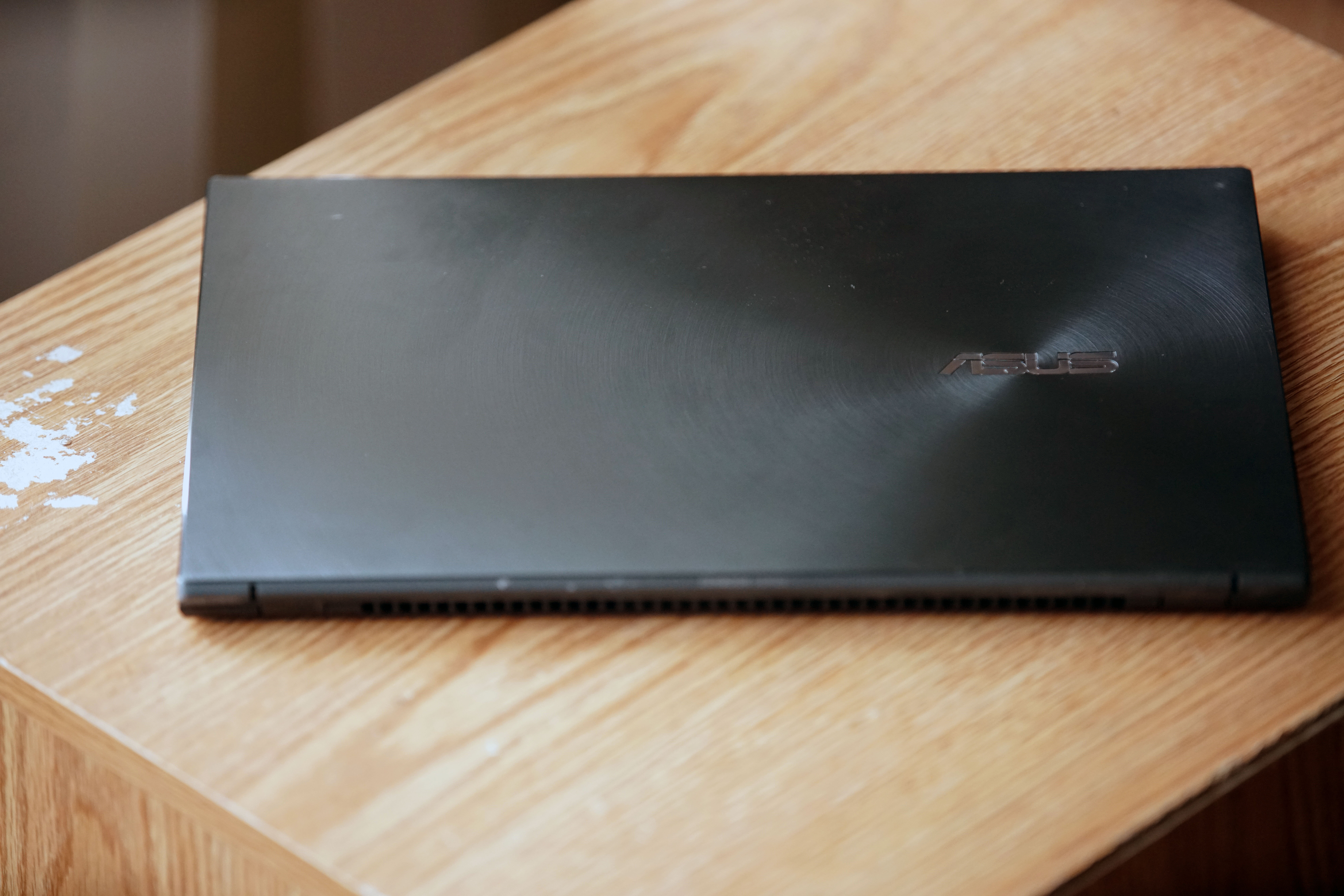
Don't buy it if...
You require a more powerful laptop
A four core Intel processor hitting 1GHz and 8GBs of ram may be a bit on the low-end spec wise.
You don’t want to fumble with dongles for audio
Unless users are utilizing a bluetooth headset, having to use up the USB C port to use a wired solution could be a turn off.
You want a better keyboard layout
The ErgoLift design allows for some comfortable typing if users have small hands. Those with bigger hands may find themselves annoyed with the smaller keyboard spacing.

Ural Garrett is an Inglewood, CA-based journalist and content curator. His byline has been featured in outlets including CNN, MTVNews, Complex, TechRadar, BET, The Hollywood Reporter and more.
